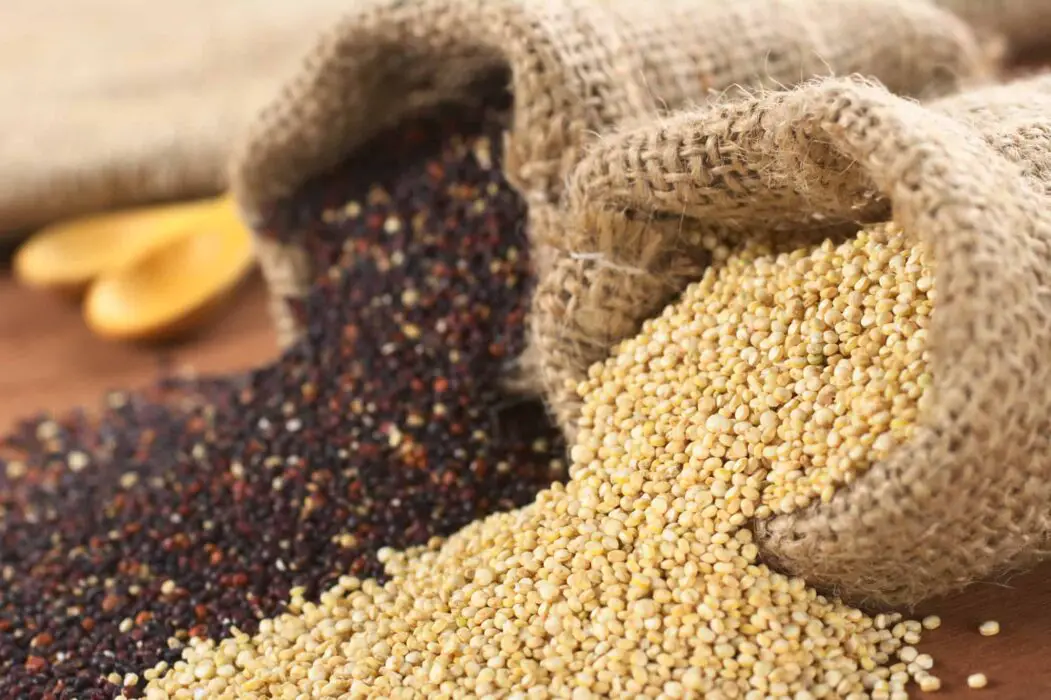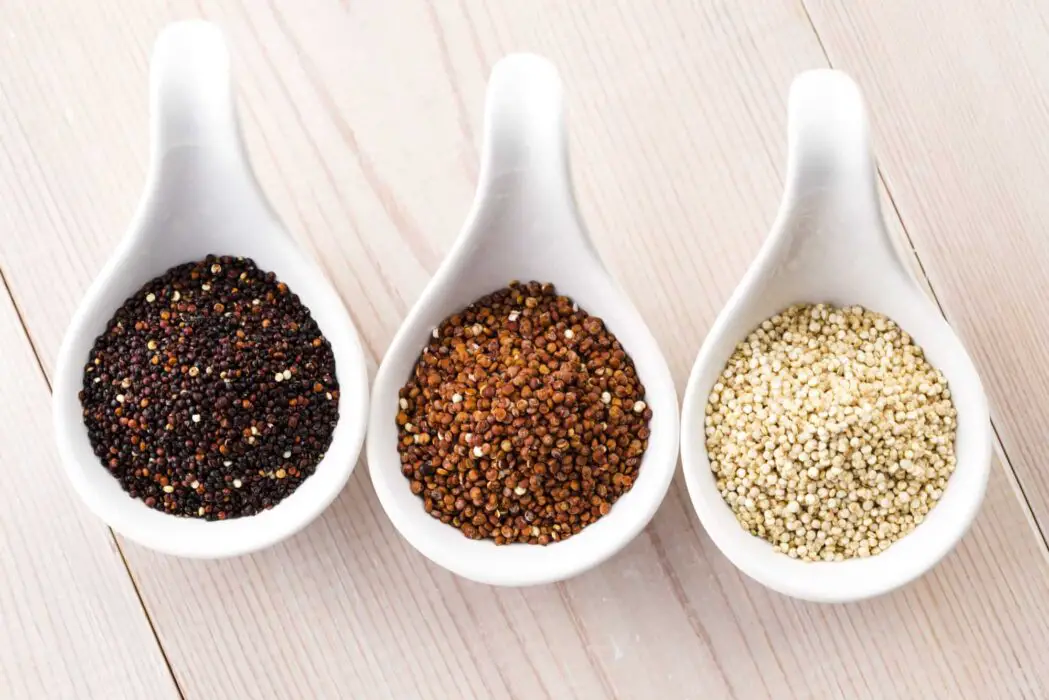In recent years, quinoa has gained popularity as a powerful superfood and is included in the recommendation of many diets. A couple of years ago, quinoa was found in specialty health food stores. But today, you can buy it in a regular grocery store or order a quinoa dish in almost every restaurant.
It has become popular because it is high in protein, magnesium, and fiber, and it is also easy to prepare. But is quinoa right for people following the keto diet? How many carbs does quinoa contain, and can it support your ketosis?
The answer is straightforward – no. Quinoa is not keto. While its macros are quite balanced for a healthy diet, total carbs are pretty high. And these carbs are not good for being in ketosis. However, serving size is the key. If you are planning to add quinoa to your low-carb diet, you should be very careful about it.

How many carbohydrates does quinoa contain? How can you add it to your low-carb menu? What are the health benefits of eating quinoa? Let’s go over all the details together. Read on to find out!
What Is Quinoa?
Quinoa is actually not a grain but a seed of the plant. It is one of the favorite food of vegetarians and vegans as it contains protein and healthy carbohydrates. Plus, it is one of the rare plants that include all nine vital amino acids, making it a perfect protein superfood.
There is white, red, and black quinoa. We are most used to the white kind because it has a neutral taste. The other two types have a bright taste and are more crunchy in ready-made dishes since they are less boiled. Black and red quinoa are good for salads, and black is the most dietary because it contains the least amount of fat.
Is Quinoa Keto?
Despite all its benefits, quinoa is not exactly a low-carb food. 100 grams of cooked quinoa contain 120 calories and:
- 21.3 g net carbs
- 2.8 g fiber
- 0.9 g sugar
- 4.6 g protein
- 4 g of fat.
While these macros are quite balanced for a healthy diet, the total carbs are pretty high. Moreover, 83% of these carbohydrates are starchy carbs, and it is about the same amount of carbohydrates as in rice. So, quinoa is not keto.
Since your body does not completely digest the carbohydrates from dietary fiber, subtracting the total fiber from the total carbohydrate in the food tells you how many carbohydrates your body is absorbing.
The number obtained in this way is called net carbs. Since 100 grams of cooked quinoa contain 2.8 grams of dietary fiber, this serving contains approximately 18.5 grams of net carbs. While this number is less than total carbs, keep in mind that it still significantly exceeds the 13 grams of net carbs found in a single slice of whole-grain bread, a food that is generally prohibited on the keto diet. For this reason, quinoa is not suitable for the keto diet. You can read our complete keto guide to learn more about keto foods.
Carbs in Rice: 5 Reasons to Avoid Rice on Keto Diet
However, quinoa can be a great choice if you are on a low-carb diet that allows you to eat up to 50 grams of carbs per day. If so, I recommend that you add quinoa to your diet for various health benefits if you are not on a strict keto diet. Let’s take a closer look at those benefits.

Health Benefits of Quinoa
There are more than 120 varieties of quinoa, but most often, you can find white, red, and black seeds. In addition to the color of quinoa, different types of seeds differ in taste, composition, and useful properties.
The most delicious is white quinoa, which resembles white rice in its taste. Red quinoa contains the maximum amount of protein, calcium, phosphorus, iron, and riboflavin. It is most often added to salads due to its ability to retain its shape and fruity aroma.
Black quinoa has an unusual aroma and crunchy texture. It is quick to cook, but it is sold only in specialized stores. It contains anthocyanins, which have anti-inflammatory and antioxidant effects. Quinoa protects the body from free radicals and prevents chronic diseases, diabetes mellitus, and heart pathologies. Let’s take a look at the main benefits of quinoa for your health.
It Helps Lose Weight
Thanks to the low-calorie content of quinoa, the beneficial properties will help you lose weight. Therefore, these seeds are included in various diets.
The fiber in quinoa reduces appetite, suppresses hunger, cleanses the gastrointestinal tract from toxins and poisonous substances, and promotes fats’ breakdown. In addition, quinoa activates metabolism, which accelerates the dissolution of fats. Adhering to a diet with quinoa will eliminate excess weight, avoiding hypovitaminosis since it can provide the body with all the necessary nutrients.
It Is an Essential Food for Vegans
Thanks to the rich composition of quinoa, the benefits appear fairly quickly when consumed regularly. It is ideal for vegans as it can fully replace meat protein, and it contains twice as much protein as rice and barley. It also exceeds other grains in fiber, antioxidants, and folate.
In addition to the elements listed above, quinoa contains vitamins (E, group B), all essential amino acids, slow carbohydrates, healthy fats, saponins, flavonoids, quercetin, kaempferol, and mineral elements. One serving of quinoa can provide the body with a daily dose of calcium, potassium, magnesium, and copper. Quinoa is perfect for a vegan low-carb diet but is not suitable for vegan keto.

It Has Beneficial Effects on the Body
With regular use of quinoa, these beneficial properties will be noticeable:
- strengthens the immune system;
- restores hormones;
- relieves headaches;
- lowers the concentration of cholesterol;
- activates the functioning of the pancreas;
- increases the level of hemoglobin, prevents anemia;
- fills with energy;
- removes toxins from the body;
- accelerates tissue regeneration;
- gives strength to bones, serves for the prevention of arthritis, arthrosis, and osteoporosis;
- strengthens hair, stops hair loss and breakage;
- gives the skin elasticity;
- prevents cancer, atherosclerosis, and arterial hypertension.
Healthy quinoa will benefit diabetics due to its low glycemic index (53) and its ability to lower blood sugar levels.
It strengthens the nervous system and has a calming effect on the body, has a beneficial impact on the psyche, and normalizes sleep. It activates the synthesis of the “hormone of joy,” improves mood, and relieves stress.
Carbs in Potato: Tasty Keto Potato Chips Alternatives
Quinoa quickly regenerates the body and gives you energy. Therefore, it is recommended for athletes, people experiencing increased physical activity, and patients who have undergone surgery.
Contraindications to Quinoa
In some cases, quinoa, in addition to being useful, can also be harmful. It can reduce the absorption of certain minerals, and provoke the formation of gallstones. But such problems usually arise if quinoa is improperly processed before cooking or if it is overused. To avoid unpleasant consequences, the quinoa must be rinsed and soaked well.
Saponins also have a doubtful effect on the body. They have choleretic properties, improve the functioning of the pancreas, and remove cholesterol. At the same time, saponins are toxic. But they show such properties only if they are used in large quantities. In moderate doses, the substances will not harm the body. The concentration of saponins in the refined quinoa is significantly reduced.
Lactating women, especially in the first month, should not consume this exotic “cereal.” Although quinoa may not harm your baby, almost nothing is known about its effects on newborns.
Quinoa is contraindication in individual intolerance, cholecystitis, pancreatitis, exacerbation of ulcers, gastritis, and age less than two years. It should be used with caution in case of gout, cholelithiasis and urolithiasis, renal pathologies.

Conclusion
Low carb diets, including the keto diet, are higher in fat and protein than the regular diet. While the low-carb diet limits your carbohydrate intake to 50-130 grams per day, the keto diet limits your intake to 15-20 grams.
Despite the fact that quinoa is a healthy food, it is high in carbohydrates and you should limit or avoid it on a keto diet. If you decide to include it in your nutrition, use only a small amount. Instead, consider it as an occasional side dish for salads, soups, sandwiches, or other dishes.